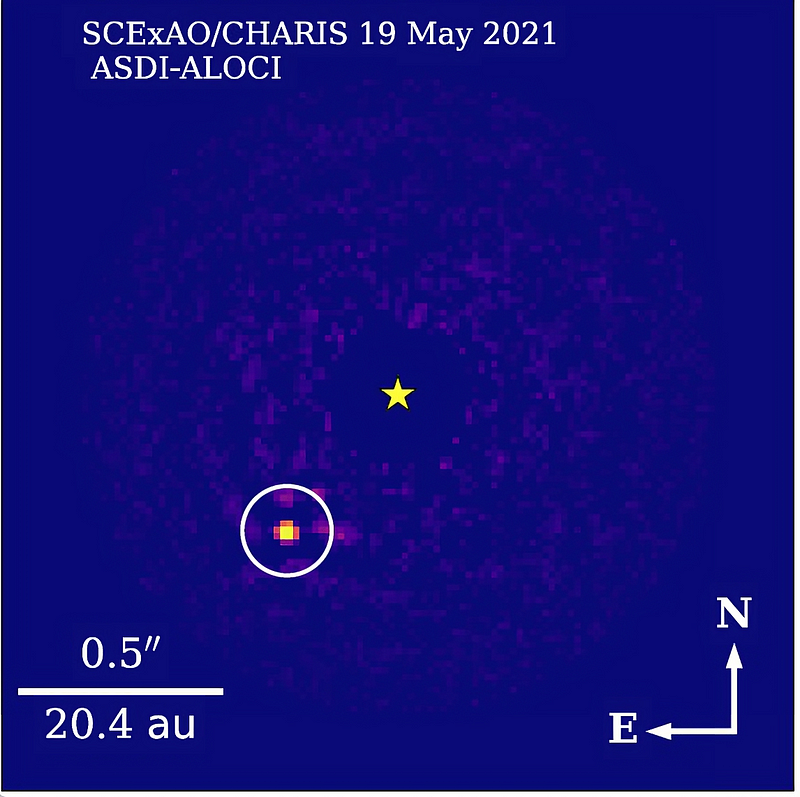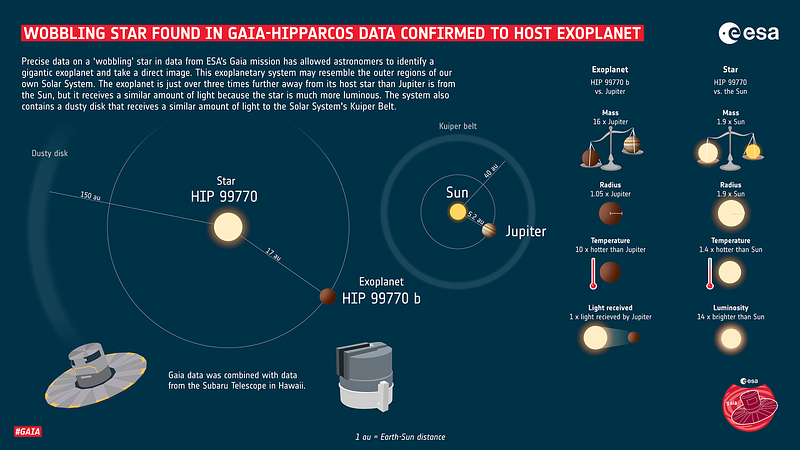Exploring the Direct Imaging of Exoplanets and New Discoveries
Written on
Chapter 1: A New Era in Exoplanet Imaging
The occurrence of direct imaging of planets from distant star systems is an extraordinary event. Recently, scientists have identified an exoplanet using a novel method: first, they monitored the movement of its parent star, and subsequently captured an image of the planet itself.

Thayne Currie, an astrophysicist affiliated with the Subaru Telescope in Hawaii, passionately states, “We are witnessing the dawn of a new age in imaging extraterrestrial worlds.” This remark reflects the innovative techniques for detecting and analyzing exoplanets, as detailed in a recent publication in the esteemed journal Science.
Under Currie’s leadership, a team has unveiled a new exoplanet, designated HIP-99770b. This discovery was made by observing the movement of the star it orbits, followed by the planet being captured in a photograph. This method represents a significant advancement in the search for extrasolar worlds. Currie explains, “By employing both direct imaging and astrometry—essentially the study of the motion and position of celestial bodies—we were able to characterize an exoplanet comprehensively for the first time. We could analyze its atmosphere, estimate its mass, and determine its orbit all in one go.”
Currie adds, “This innovative strategy for locating exoplanets opens the door to future methodologies. Ultimately, we hope to find and study planets similar to Earth around nearby stars.”
How Exoplanets Are Detected
The search for exoplanets residing in far-off stellar systems presents a significant challenge, as these planets are considerably smaller and dimmer than their host stars, making direct observations incredibly difficult. Currently, scientists have confirmed the existence of approximately 5,300 extrasolar planets, with most being discovered indirectly.
The first method is the transit technique, where the presence of an exoplanet is inferred when it passes in front of its star, causing a periodic dimming of the star's light. These fluctuations in brightness allow scientists to deduce the existence of a planet.
The second method involves observing changes in the star's light properties. Contrary to what it seems, the star does not remain stationary relative to the planet. A massive planet's gravitational influence causes the star to move slightly, resulting in what is known as the Doppler effect. This effect alters the frequencies of the light waves emitted by the star.

[Photo: ESA, CC BY-SA IGO 3.0, CC BY-SA 3.0 IGO, via Wikimedia Commons]Stars are not stationary
This subtle motion caused by the presence of an exoplanet can also be detected through other means. Stars are not fixed; they orbit the centers of their galaxies just as planets orbit their stars. If an exoplanet orbits a star, this affects the star's trajectory through the galaxy. Researchers can identify potential exoplanet candidates that are farther from their stars using this approach.
The authors of the Science paper analyzed data from Milky Way stars collected by the Gaia and Hipparcos missions, studying star positions over 25 years. Their analysis identified stars that exhibited unusual "swaying" patterns, which could indicate the presence of a massive exoplanet in orbit.
Direct Observations of the Exoplanet
Following the identification of promising stars, scientists conducted direct observations using the Subaru Telescope and the Keck Telescopes in Hawaii. A closer examination of the star HIP-99770 revealed a significant exoplanet located about 17 astronomical units away (17 times the distance from Earth to the Sun): HIP-99770b.
This planet is comparable in size to Jupiter but is estimated to be 14 to 16 times its mass and orbits three times farther from its star than Jupiter does from the Sun. “This is just the beginning of many discoveries made possible through the combination of astrometry and direct imaging,” Currie announces. “We have several more exciting findings that will be shared with the public in the coming year.”
What Time Is It on the Moon? A Question for the Ages
The complexities of general relativity and geopolitical factors render the answer to this seemingly straightforward question elusive.
Explore the fascinating methods used in the direct imaging of exoplanets with our first video.
In our second video, discover the recent findings of the James Webb Space Telescope, which may have uncovered a planet with city lights, hinting at the possibility of a new Earth.
Thank you for reading! If you found this article informative, I'd appreciate your support through likes or follows. Feel free to leave a tip as well! Thank you!